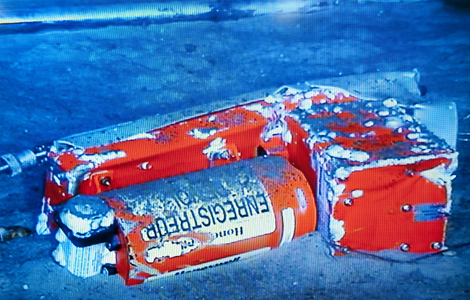The Verdict on Air France 447
One big factor in the accident: uncertainty as to who was flying the plane.
Over the past couple of weeks I’ve had the chance to talk with other pilots about the tragic Air France accident that occurred on June 1, 2009. These discussions were prompted by the recent release of the final accident report and the transcript of conservations in the cockpit.
In the initial aftermath of the crash, there was a lot of speculation that the plane had broken up in flight after encountering a severe thunderstorm over the Atlantic Ocean. The in-flight break-up, so the conventional wisdom went, resulted from the pitot-static system icing up, thereby giving erroneous information to the pilots who inadvertently over-stressed the airframe.
It was nearly two years later, in April 2011, that the main debris field was located. The pattern of debris suggested that the plane had been intact upon impact with the ocean. Incredibly, the Flight Data Recorder (FDR) was located, followed by the discovery of the Cockpit Voice Recorder (CVR) a week later. With the information provided by these “black boxes,” the story of what happened becomes much clearer.
A few things about this accident jump out at me when I read the transcript. There never seems to be any clear understanding between the two First Officers as to who is actually flying the plane. The more junior FO is the designated “flying pilot” at this point, while the Captain is on his rest break, but the other, more senior, FO makes control inputs at some points. Basic crew resource management requires that one pilot be flying at any given time and that the division of duties is always made clear (e.g. “You have the airplane”, “I have the airplane”).
Here’s the part that I believe was a major contributor to the accident. On the Airbus, when one pilot makes a control input (e.g. pulling back on the sidestick), the other pilot has no indication of this control movement. Compare this to more traditional aircraft, which have control yokes in front of both pilots. On these planes, when one pilot moves the yoke, the other pilot’s yoke moves in tandem. If I hold full back stick, this is glaringly obvious to the other pilot. Apparently this is not so on an Airbus. In addition, when both pilots move their respective control sticks, the inputs are averaged. So, when the senior FO made an attempt to lower the nose of the plane, his efforts were stymied by the junior FO who was holding back stick throughout the descent.
Though all of these things were major contributors to this accident, the root problem seems to be a lack of basic airmanship. The initial response by the junior FO to the loss of airspeed information (initiating a climb) was not something an experienced pilot should ever do, particularly when already at a safe altitude. But this initial mistake was still very recoverable. All that was needed was to lower the nose to regain airspeed and fly out of trouble. Instead, he compounded the problem by continuing to hold back pressure throughout the descent, causing a perfectly good plane to stall all the way to impact.
Like every other pilot, I’d like to think that I wouldn’t have made these mistakes. But I wasn’t there, so I don’t know how the confusion of the situation would have affected me, and I hate being the Monday-morning quarterback. I am glad that the black boxes were recovered so we don’t have to wonder about some mysterious gremlin that might pop up unexpectedly on some other flight. Somehow, it’s reassuring to me to know that the cause was more mundane, and eminently avoidable.
/https://tf-cmsv2-smithsonianmag-media.s3.amazonaws.com/accounts/headshot/Steve-Satre-headshot.jpg)

/https://tf-cmsv2-smithsonianmag-media.s3.amazonaws.com/accounts/headshot/Steve-Satre-headshot.jpg)